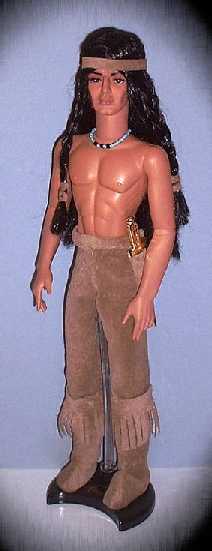 Another Stereotype of the Month entry:
Another Stereotype of the Month entry:
 Another Stereotype of the Month entry:
Another Stereotype of the Month entry:
From the LA Times, 12/19/03:
BOOK REVIEW
Resilience of a culture uprooted and replanted
The Legend of Fire Horse Woman; Jeanne Wakatsuki Houston; Kensington Books: 330 pp., $23
By Anthony Day, Special to The Times
As social history "The Legend of Fire Horse Woman" excels. As a novel it is not as satisfying. The principal female characters — Sayo, her daughter and her granddaughter — are persuasively well realized, all three drawn from the perspective of a sturdily independent contemporary American woman.
The male characters are more unevenly limned. The husband whom Sayo sailed to America to meet is sympathetically drawn, but he soon disappears into the fog of an opium den in San Francisco. The love of her long life is her husband's mysterious best friend, Cloud, who has learned to speak some Japanese.
By the time we are in Manzanar with Sayo and her family, some of them have mysterious visions and dreams of strangely familiar people — yes, the Native Americans on whose former lands they are imprisoned, and whose ancestors crossed the land bridge from Asia. Cloud is part Paiute, a tribe that dwells in the Owens Valley, and he leads ghost dances to prevent, unsuccessfully as it turns out, the whites from stealing more of his tribe's ancestral water through the Los Angeles Aqueduct project.
In this novel washed in romantic tints, Cloud is the male figure most favored. Tall and handsome, he is unfailingly kind, gentle, sexy and wise, the perfect partner for the beautiful, indestructible, sexy and loving Sayo.
If the two of them seem too good to be true, why, that is the way we would wish them to be, isn't it?
Rob's comment
The Cloud character, with his stereotypical name, seems to be a cross between of noble savage and eco-warrior.
That Indians protested the taking of the Owens Valley water in the 1940s, did so with attention-getting ghost dances, and were "tall and handsome" by Western standards are all unlikely occurrences.
In romantic fiction, the virile Indian hunk is the male counterpart of the beautiful Indian princess.
Correspondent Jon Brewer adds:
Bonus points for the Suzy Wong syndrome, cuckolding her (Japanese) husband like that, thus showing that we can stereotype several ethnicities at once! (In all fairness, he isn't a white man, but still....)
Some Indians are pretty tall, but I don't think the Paiutes are among them; 6' or more is the norm on the plains, not California.
|
. . . |

|
All material © copyright its original owners, except where noted.
Original text and pictures © copyright 2007 by Robert Schmidt.
Copyrighted material is posted under the Fair Use provision of the Copyright Act,
which allows copying for nonprofit educational uses including criticism and commentary.
Comments sent to the publisher become the property of Blue Corn Comics
and may be used in other postings without permission.